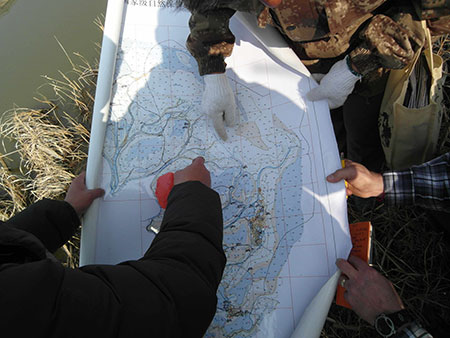Project Overview

Freshwater lake systems and their wetland areas are some of our most important ecosystems in the world: they provide a wide range of vital ecosystem services (e.g. food, water filtration, storm protection), support some of the highest levels of biodiversity, and serve as fishing grounds that sustain the livelihoods of local populations. These areas are also some of our most vulnerable ecosystems, often those most acutely affected by hydrological control.
Poyang Lake, in south-central China, is characterized by regular flood-pulses which drive ecosystem function, biodiversity patterns and productivity, and ecosystem services. Over 300 species of migratory waterbirds rely on Poyang Lake for wintering refuge. Meanwhile, the greater Poyang basin is home to an estimated 9.7 million people, many of whom depend on the lake and nearby sub-lakes for both aquaculture and rice agriculture. Local and regional hydrological controls are managed to provide for human needs in this dynamic system. Water levels in most sub-lakes are maintained artificially in the low-water period; local fishermen release water from the gates seasonally at their discretion, operating a weir system to harvest fish.
Goal

Understanding the physical and human processes that influence the dynamics of freshwater lake systems is critical for effective planning and management aimed at the long term conservation of these vital resources. The grand goal of this Poyang Lake study to is spatially project future waterbird foraging habitats under altered hydrological scenarios, and identify how waterbird species, particularly the Siberian crane, are likely to adapt their foraging patterns in response to changes in inundation and habitat.
The goal of our research is decomposed into a current research: Incubator Project and a prospective research: Earthwatch Project.